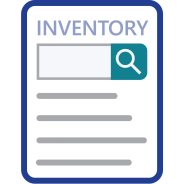
Choose from 5 options:
These decision tools are designed help you categorise your chemical importation or manufacture (introduction).
These self-guided tools will help you to categorise your introduction as either listed, exempted, reported or assessed. You’ll need to refer to the Industrial Chemicals Categorisation Guidelines and the Industrial Chemicals General Rules to help you answer some of the questions.
This decision tool is coming soon. Please use Step 0 of our 'Guide to categorising your chemical importation or manufacture' (Categorisation Guide) to work out if your introduction is in the listed category.
We're currently updating this decision tool and it will be back online soon. Please use Step 1 of our 'Guide to categorising your chemical importation or manufacture' (Categorisation Guide).
Decision tool – Work out if your introduction is categorised as exempted
Decision tool – Work out if your polymer is a Polymer of Low Concern (PLC)
Decision tool – Work out if your introduction is categorised as reported
Decision tool – Work out if your introduction is medium to high risk for human health
Decision tool – Work out your human health exposure band
Decision tool – Hazard characteristics for human health exposure band 1: use this tool if your introduction is in human health exposure band 1.
Decision tool – Hazard characteristics for human health exposure band 2: use this tool if your introduction is in human health exposure band 2.
Decision tool – Hazard characteristics for human health exposure band 3: use this tool if your introduction is in human health exposure band 3.
Decision tool – Hazard characteristics for human health exposure band 4: use this tool if your introduction is in human health exposure band 4.
Decision tool – Work out if your introduction is medium to high risk to the environment
Decision tool – Work out your environment exposure band
Decision tool – Hazard characteristics for environment exposure band 1: use this tool if your introduction is in environment exposure band 1
Decision tool – Hazard characteristics for environment exposure band 2: use this tool if your introduction is in environment exposure band 2.
Decision tool – Hazard characteristics for environment exposure band 3: use this tool if your introduction is in environment exposure band 3.
Decision tool – Hazard characteristics for environment exposure band 4: use this tool if your introduction is in environment exposure band 4.
Decision tool – Complete your categorisation
Help us improve these tools by giving us your feedback.